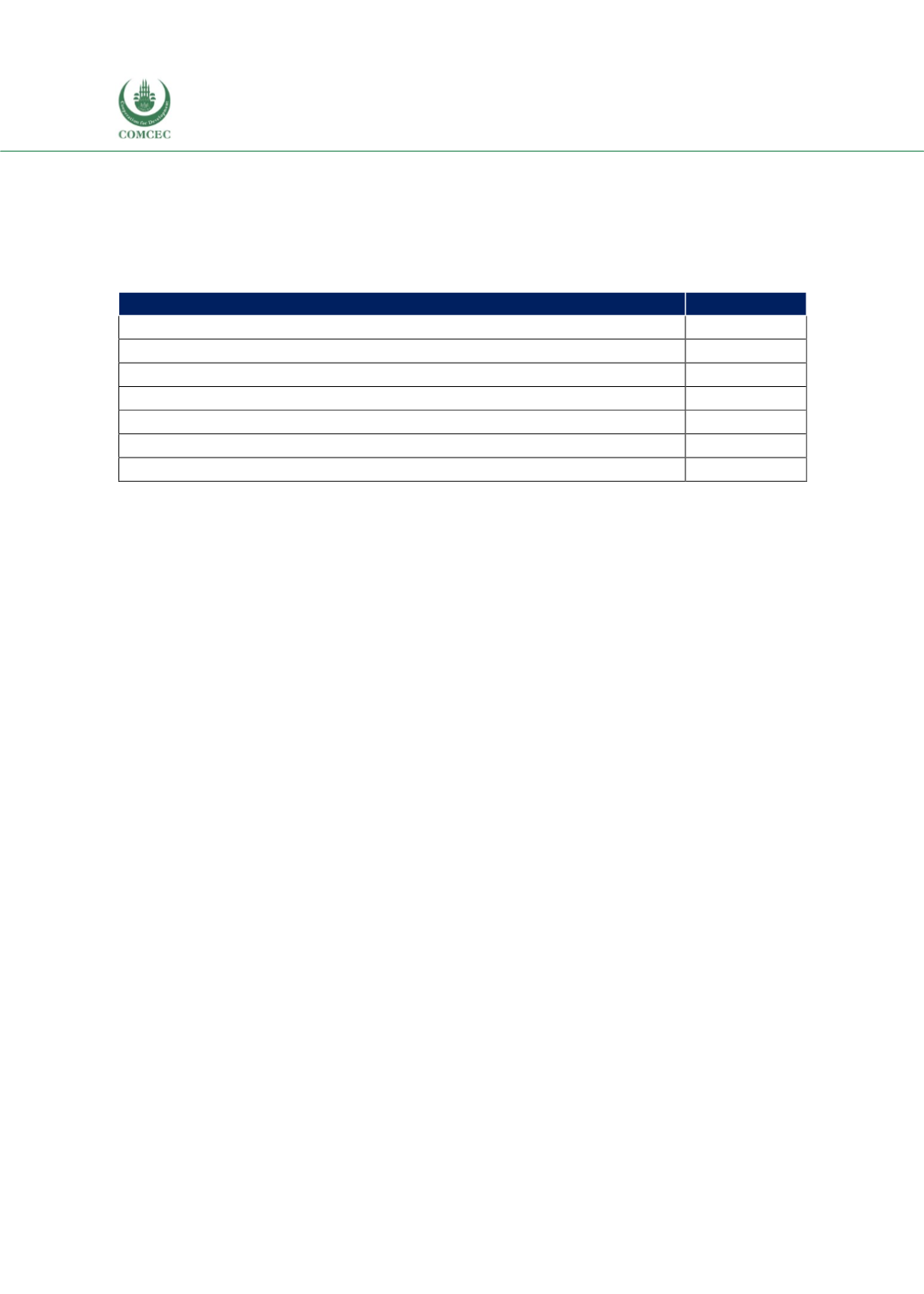

Reviewing Agricultural Trade Policies
To Promote Intra-OIC Agricultural Trade
68
For instance, poor management of SOEs is indicated as a major weakness by several participants
from different countries. Besides, the domestic orientation of SOEs is identified as a reason that
limit their trade facilitation function. Governments’ regulatory role is stressed as the main
complementarity mechanismwith the private sector that would ensure highest efficiency levels
in various stages of the supply chain.
Table 3. 17 Regions with which Agricultural Trade is Expected to Increase
Region
Response Rate
Middle East
73.91%
Asia
47.83%
Africa
45.65%
Western Europe
41.30%
Central and Eastern Europe, the Baltic States and the CIS (transition economies)
34.78%
Latin America
8.70%
North America
4.35%
Source: Authors’ calculations
Over 80% of participants indicate that the agricultural cooperatives in their countries are and
will be key market institutions that contribute to trade facilitation. The cooperatives from the
participants’ countries are dispersed over a large spectrum of products including those
classified within fish products, animals, fruits and vegetables, and dairy products. Cooperatives
are seen as key institutions for a variety of reasons. A relatively large number of responses are
focused on different stages of supply chains, especially underlining that large cooperatives help
reduce information and credit barriers for smallholder farmers and prevent exploitative
practices exercised by middlemen.
Improvements in NTM arrangements such as standardization and accreditation schemes,
bilateral and multilateral trade agreements, infrastructure investments that would yield
improvements in logistic performance, increasing FDI flows, and product diversification are
seen as the foremost means through which further trade facilitation can be realized with current
trade partners.
The survey also includes questions that are designed to shed light on the trade networks within
OIC. Clearly, responses to these questions would be dependent on the list and groups of
countries which the survey participants are from. Among the regions with which agricultural
trade is expected to be strong in the next 5 years, the Middle East stands out as the top region,
receiving around 74% of responses. The Middle East is then followed by Asia (around 48%) and
Africa (around 46%). Neither the North America nor the South America exhibits a strong
potential in this regard.
The treemaps in Figure 3.16 indicate that there is an expectation of agricultural trade
relationships exhibiting some degree of persistence both with the OIC partners and with the
non-OIC partners. As stressed in other parts of this report, Saudi Arabia and Turkey are
agricultural import and export hubs within the OIC, respectively. These countries are
accompanied by non-OIC partners Russia, Germany and China both for the current and for the
future agricultural trade relationships.
















